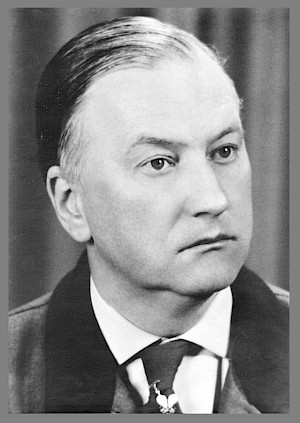After the Second World War, Lower Saxony became the main settlement area for millions of refugees and expellees from the then German eastern territories on the other side of the Oder-Neisse line.
At the beginning of the 1950s there were so many East Prussians living in the Luneburg region that people temporarily spoke of "Little East Prussia in the Luneburg Heath". In addition to coping with the hard conditions of survival and existential new beginnings in a foreign environment, the expellees without means or homeland strove to preserve their cultural identity.
In 1958 the initiative of Hans-Ludwig Loeffke, forestry master born in 1906 in Tilsit, and other East Prussians created the East Prussian hunting museum in the Altes Kaufhaus (old department store) near the old crane in Luneburg. Thematically, the museum was dedicated to game, forest and horses of East Prussia.


A year later it was the victim of an arson attack. Siegfried Lenz commemorated the fire of an East Prussian museum of local history in his novel “Heimatmuseum” (engl. "The Heritage”, published in 1978). Unlike in the novel, however, the Luneburg arson was not directed against the museum. Nevertheless, the damage was tremendous, only a few exhibits could be saved.
1964 After the collection had been rebuilt, the museum was reopened in Salzstraße 26 with the support of the city and district of Luneburg, the state of Lower Saxony and the federal government.
1974 Death of Hans-Ludwig Loeffke. The museum management was taken over by Horst Albinus, also on a voluntary basis.
1981 Extension of the programme and renaming as "Ostpreußisches Jagd- und Landesmuseum" (East Prussian hunting and state museum) thus prior to the "Basic Concept for the Continuation of East German Cultural Work" drawn up by the federal government in 1982, which provides for the establishment of "Main Museums of the Great East German Regions".

1985 The art historian Dr Friedrich Jacobs took over full-time management and developed a museum concept with three other scientists, initially employed for a limited period, for the new building located at Ritterstr. 10, which had already been under construction for two years. The architect was Richard Westrén-Doll, a Baltic German graduate engineer.
1987 Opening of the new building with 3,000 sqm of usable space and the permanent exhibition, which was not quite complete. The future work of the museum, which is now professionally run by full-time scientists, has since been guaranteed by funding from the Federal Republic of Germany and the state of Lower Saxony on the basis of Section 96 of the “Bundesvertriebenengesetz” (Federal Expellee Law).
1990 The folklorist Dr Anja Benscheidt became the new director.
1991 The historian Dr Ronny Kabus was appointed as the director of the museum.

The construction site in 1984, in the foreground the excavation pit of the “Landeszentralbank” (state central bank) building which was under construction at the same time.
1994 The sponsorship of the museum was transferred from the "Verein Ostpreußisches Jagd- und Landesmuseum e.V." (Association of the East Prussian Hunting and State Museum) to the East Prussian Cultural Foundation.
2005 Dr Jörn Barfod, art historian and former deputy, temporarily took over the management of the museum.
2009 The historian Dr Joachim Mähnert was appointed as the new director after several years of vacancy.
2010 The museum took over the neighbouring Luneburg Brewery Museum.

2014 to 2018 Modernisation and extension of the East Prussian state museum. The museum’s Baltic German department was established, the topic and target region of which was included in the purpose of the foundation.
The "Scharffsche Haus", a 1472 citizen and brewery house, was turned into the new entrance building with a café and museum administration on the upper floors. The museum entrance was thus relocated to Heiligengeiststraße in the centre of Luneburg's old town.
A new building for the foyer and exhibition was erected in the courtyard behind the building. The renowned architecture firm Gregor Sunder-Plassmann was assigned to do this.
The completely revised permanent exhibition opened in 2018. Covering an area of 2,000 square metres on three floors, an extremely varied exhibition has been created which is aimed at families and tourists and invites visitors to try out and participate in many things and aiming at families and tourists. In addition to the as complete as possible presentation of the fascinating cultural history and unique landscape of East Prussia, an independent Baltic German department as well as a large module on the fate of refugees and expellees after 1945 have been added. The planning office was Homan Güner Blum Visual Communication.
We would like to thank our sponsors for their support of the extension from 2014 to 2018.
A second construction phase for an extension of our museum on Immanuel Kant in Königsberg and the German Enlightenment is planned on still undeveloped open ground until 2024.
